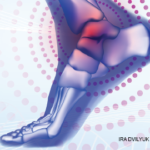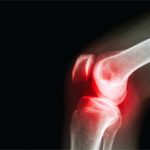Because of the implications of this approach, achieving optimal correction should be given the same due diligence used to prescribe and monitor medications. To utilize orthotics optimally, I recommend that you find an experienced podiatrist or other professional to make these devices and insist on optimal correction (subtalar neutral). Once the devices are made, you should evaluate your patients standing barefoot on and off the devices and, if ideal correction is not achieved, ask to have the devices adjusted. I often do this a number of times with the devices on my own patients, and the results are well worth it.
New OA Guidelines
The ACR is currently finalizing updated recommendations for the pharmacologic and nonpharmacologic management of osteoarthritis of the hip, knee, and hand. It is anticipated the recommendations will be published in Arthritis Care & Research by late summer.
Therapeutic Effect of Controlling Malaglignment
Pathomechanics is a major factor in the etiology and progression of OA of the weight bearing joints. My feeling is that the focal point of this pathological process is excessive pronation at the subtalar joint. By optimally controlling the function of this important joint, it would seem that better alignment would be achieved and subsequent signs and symptoms reduced. This scenario would also imply that, with early disease, prevention is possible, while in advanced cases, results would probably not be as effective. Also, with proper alignment, joint replacement surgery may be prevented or delayed, and the life of replacement joints might be extended. All of this has been my experience.
While physical therapy, exercises, braces, and other modalities can be helpful, I have found nothing more powerful or rapidly effective as custom foot inserts. Structural alignment must be the first step if optimal results are to be achieved.
Much of what others and I have learned about controlling symptomatic pathomechanics of the weight-bearing joints comes from treating runners. I experienced this firsthand when I developed a stress fracture in my fibula while training for a race in California. It was 1972, and I was doing my residency there; at the time it was the running Mecca of the world. The custom foot orthotics I was given had an impressive effect in both eliminating my symptoms and expanding my thinking. What I learned, I applied to treating conditions like runner’s knee, IT band syndrome, and other more proximal conditions by controlling excessive subtalar joint pronation. Many others have experienced similar impressive results. Williams et al showed significant differences in tibial torsion and knee abduction in symptomatic runners with orthotics.4 MacLean et al demonstrated improved knee function even in asymptomatic runners.5 A study on runners done at the Human Performance Laboratory at the University of Calgary in Alberta, Canada, showed that orthotics decreased excessive pronation, increased vertical loading, and external knee rotation.6

